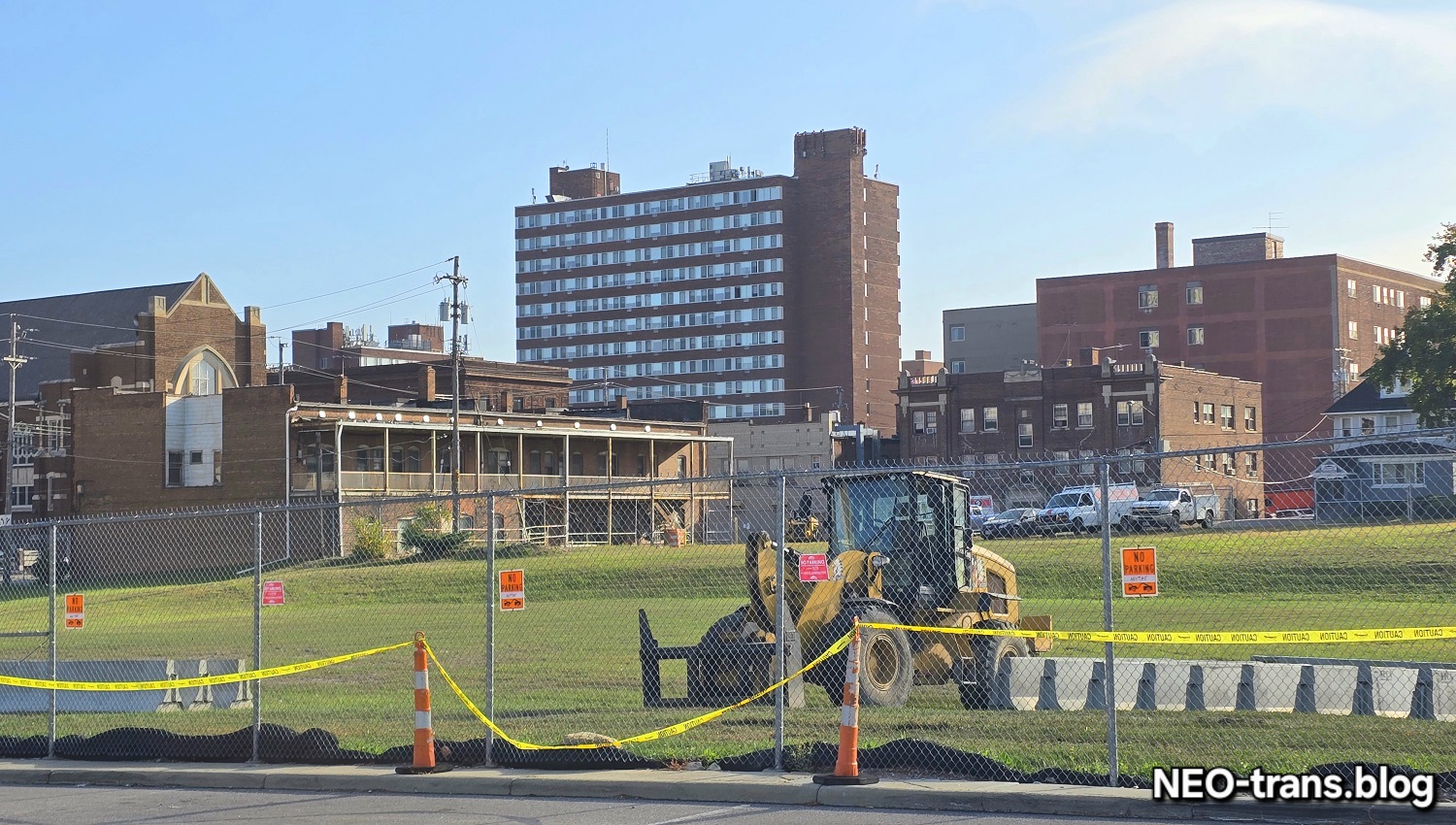Cleveland City Council Stalls on Browns Deal
A split City Council has yet to approve a proposed $100 million settlement with the Browns, a key piece of Mayor Justin Bibb’s plan to unlock more than $1 billion in potential lakefront redevelopment.
by Ken Prendergast, NEOTrans | Nov. 26, 2025 | 10:30 AM

COURTESY OF GOOGLE
This article was published through an exclusive content-sharing agreement with neo-trans.blog.
One deadline has passed. Another is about to. And a third is coming up. But by the end of the year, Cleveland Mayor Justin Bibb’s administration hopes to have a much more coherent vision of Downtown Cleveland lakefront development whose private-sector investment could exceed $1 billion — with a capital B.
Right now, that vision looks elusive. At its regular meeting Monday, City Council did not approve a proposed $100 million settlement between the Haslam Sports Group (HSG) and the Bibb Administration despite the urging of both.
The deal lets HSG’s Cleveland Browns pro football team leave legally unscathed for a new stadium in suburban Brook Park as early as 2029. HSG and Bibb wanted it passed last Monday. And it may not get passed at next Monday’s council meeting either, barring a surprise consensus among council members.
They will get their chance to come to an agreement Monday morning at a scheduled Committee of the Whole meeting that includes all of council. So far, none of the committee hearings have achieved any consensus response to the proposed settlement.
“You’ve seen the hearings,” City Council President Blaine Griffin told NEOtrans. “It’s all over the place.”
Some council members have argued that the Bibb Administration could have gotten more from HSG, led by billionaires Dee and Jimmy Haslam. Other council members said they wanted more settlement money going to the neighborhoods than the proposed $2 million per year over 10 years.
The Bibb Administration and HSG have said the settlement is a take-it-or-leave-it offer. But at this rate, the deal will have to be amended anyway since it won’t meet the first of several requested timelines.
It includes $25 million payable by HSG on Dec. 1 going to lakefront development with another $25 million payable over five years starting in 2029. And, HSG would demolish the 67,431-seat Huntington Bank Field — home of the Browns since 1999 — at their expense, estimated at $30 million plus any cost overruns.
“This $100 million investment continues our lakefront momentum and economic resurgence,” Bibb said. “This is the right solution for the city and the region.”
HSG Chief Communications Officer Peter John-Baptiste did not respond to a message left for him, seeking comment prior to publication of this article.
The third deadline is more of a goal. The city in July offered a request for qualifications (RFQ) to real estate developers to build out 50 acres of highly visible and valuable land on Downtown Cleveland’s lakefront. Another 15 acres will be reserved for public spaces. The lakefront land in the RFQ is owned by the city.
Officials at City Hall and at the nonprofit North Coast Waterfront Development Corporation (NCWDC) said they plan to announce tentative agreements with one more developers by the end of next month. The developers, who must have proven success in delivering projects, will have lakefront plans that are financially viable and provide public access to Lake Erie, city officials have said.
Several developers who didn’t make the cut reached out to NEOtrans and spoke on the condition of anonymity. They said the city envisions a significant mixed-use development on 50 acres of land with a total price tag exceeding $1 billion.
At a Cleveland City Club presentation last month, NCWDC Executive Director Scott Skinner said the city got an unexpected number of developer responses which came from Northeast Ohio and all over the country. He declined to elaborate in a brief phone interview which otherwise confirmed this and other already reported news.
It remains to be seen if more than one developer gets tapped to do the job. Large-scale developments such as this typically engage multiple developers to spread costs and attract more investor capital. It could also allow different developers to focus on different land uses, such as residential, commercial, retail, hospitality and others.
The RFQ site includes roughly 22 acres of land currently occupied by Huntington Bank Field — something that cannot be developed unless the stadium is gone and there is significant funding in place to help build infrastructure to support a lakefront neighborhood.
Already committed is $284 million — $130 million in federal grants, $20 million in state grants, and $134 million in local matching dollars from the city’s Shore-to-Core-to-Shore tax-increment financing district. More funding is needed; the HSG contribution is intended to leverage additional federal dollars which require matching funds.
The city’s plan proposes a reconstruction of the Shoreway highway into a multimodal boulevard and construction of a North Coast Connector land bridge over the railroad tracks and boulevard plus new access roads, sidewalks, bike paths and streetscaping costing about $450 million. City officials contend that the land bridge is even more vital with day-to-day uses replacing a stadium that’s used only a dozen times per year.
But the sources also said that, with the stadium gone and developer input pending, a conceptual, crescent-shaped design of the land bridge could change. The city intends to hire a firm next year to provide construction-ready blueprints for the land bridge.
While some conceptual designs may be publicly released when the chosen developers are announced next month, more detailed plans will come later on. A big variable in shaping them is whether Burke Lakefront Airport will be part of the picture much longer.
Bibb and Cuyahoga County Executive Chris Ronayne have asked members of Congress for help in bypassing the Federal Aviation Administration’s (FAA) red tape in closing the 450-acre lakefront airport.
If Burke is closed, taller downtown lakefront buildings can be developed with less FAA interference. Despite a reduction in use in recent decades, Burke has some of the best features — runway length, tarmac space, terminal size — among Greater Cleveland’s general aviation reliever airports. Getting the FAA to support its closure will be difficult.
In issuing the lakefront development RFQ, city officials explained that they want developers who are interested in helping to shape “a world-class waterfront grounded in the guiding principles of the North Coast Master Plan, which reflects values expressed by Clevelanders from all walks of life.”
Because all lands north of the railroad tracks within several miles east of the Cuyahoga River are former submerged land recovered from Lake Erie, the city cannot sell the land. So the city is offering ground leases of up to 75 years with two 50-year extensions.
The city has proposed discounted land lease payments for developers and other end users who help the project achieve goals of access, equity, or present extraordinary economic opportunities. A 15-year, 85 percent residential real estate tax abatement and a 10-year, 75 percent commercial real estate tax abatement are also offered.
For more updates about Cleveland, sign up for our Cleveland Magazine Daily newsletter, delivered to your inbox six times a week.
Cleveland Magazine is also available in print, publishing 12 times a year with immersive features, helpful guides and beautiful photography and design.

Ken Prendergast, NEOTrans
Ken Prendergast is a local professional journalist who loves and cares about Cleveland, its history and its development. He has worked as a journalist for more than three decades for publications such as NEOtrans, Sun Newspapers, Ohio Passenger Rail News, Passenger Transport, and others. He also provided consulting services to transportation agencies, real estate firms, port authorities and nonprofit organizations. He runs NEOtrans Blog covers the Greater Cleveland region’s economic, development, real estate, construction and transportation news since 2011. His content is published on Cleveland Magazine as part of an exclusive sharing agreement.
Trending
-
1
-
2
-
3
-
4
-
5










